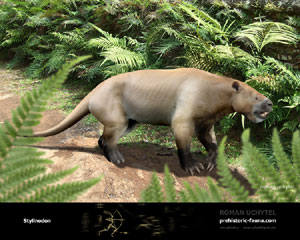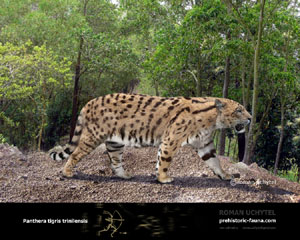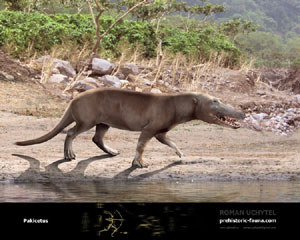|
|
 |  |  |
 |
В категории материалов: 153
Показано материалов: 61-70 |
Страницы: « 1 2 ... 5 6 7 8 9 ... 15 16 » |
Сортировать по:
Дате ·
Названию ·
Рейтингу ·
Комментариям ·
Просмотрам
 The original image size ( 300 dpi:) A-4+ (A-3) - 170$ A-5 - 130$ A-6 - 100$
My Prints
Bestiary |
Просмотров: 950 |
Author: roman uchytel |
Добавил: rom-diz |
Дата: 11.01.2012
|
|
 The original image size ( 300 dpi:) A-4+ (A-3) - 300$ A-5 - 150$ A-6 - 100$
My Prints
Bestiary |
Просмотров: 3009 |
Author: roman uchytel |
Добавил: rom-diz |
Дата: 11.01.2012
|
|
 The original image size ( 300 dpi:) A-4+ (A-3) - 250$ A-5 - 150$ A-6 - 100$
My Prints
Bestiary |
Просмотров: 1242 |
Author: roman uchytel |
Добавил: rom-diz |
Дата: 11.01.2012
|
|
 The original image size ( 300 dpi:) A-4+ (A-3) - 250$ A-5 - 150$ A-6 - 100$
My Prints
Bestiary |
Просмотров: 1091 |
Author: roman uchytel |
Добавил: rom-diz |
Дата: 11.01.2012
|
|
 Coryphodons – species of Amblypoda, widespread in the lower Eocene, at the end of which they became extinct. Genus
Coryphodon developed in Asia in the early Eocene epoch and then
migrated to the territory of modern North America where it probably
forced out the native pantodonte Barylambda. Coryphodon’s hight was
about one meter, and its weight about 500 kg. They were solid, strong
built animals with mighty neck musculature. Both sexes had large canines
of which the top ones were hypertrophied. Male species’ canines were
larger, which was characteristic for pantodontes. The scull had explicit
sagittal crest to which mighty temporal muscles were attached.
Coryphondon’s limbs were rather strong, but short. Each of the limbs had
five fingers. Finger phalanxes ended in small hooves. Coryphondon’s
brain was one of the relatively smallest among known mammals; their
brain mass was only about 90 kg. Judging by how their bodies were built,
they were quite sluggish and clumsy animals. Probably, they preferred
living in forests or close to water. Their diet consisted of leaves,
young sprouts, flowers and various swamp vegetation. Amblypodas as
animals with very small brain and rather imperfectly built teeth and
limbs could not coexist for a long time with new, more progressive
Ungulata that shortly took their place. The original image size ( 300 dpi:) A-4+ (A-3) - 300$ A-5 - 150$ A-6 - 100$
My Prints
Bestiary |
Просмотров: 1435 |
Author: roman uchytel |
Добавил: rom-diz |
Дата: 18.11.2011
|
|
 Pakicetus is a genus of extinct predator mammal which belonged to
suborder Achaeoceti. It is the most ancient of presently-known direct
ancestors of modern-day whales that lived approximately 48 mln years ago
and adjusted to searching for food under water. It was endemic to the
territory of present-day Pakistan. This prehistoric whale remained
semi-aquatic as the modern-day otter. Its ear started to adapt to
hearing underwater but still could not endure high pressure. It had
massive jaws revealing its predatory nature, closely set eyes, and
muscular tail. Its sharp teeth were suited to grasp slimy fish. Its
exterior was reminiscent of that of a dog, but with hooves on fingers
and a long thin tail; it had a skeleton suited for terrestrial life no
worse than of any other Ungulata. Probably, it had webs between fingers.
Its main peculiarity was that its malleolar bones were similar to those
of pigs, sheep and hippos. Its skull on the other hand was very similar
to those of whales. The earliest ancestors of all Ungulata
mammals were probably partly carnivorous or omnivorous. The ancestors of
whales diverged from Artiodactyla and transferred to the aquatic
lifestyle already after Artiodactyla themselves diverged from their
common ancestors with mesonychids. The original image size ( 300 dpi:) A-4+ (A-3) - 200$ A-5 - 130$ A-6 - 100$
My Prints
Bestiary |
Просмотров: 1512 |
Author: roman uchytel |
Добавил: rom-diz |
Дата: 18.11.2011
|
|
 Kvabebihyrax – a genus of very large fossils of Pliohyracidae family.
They lived only in Transcaucasia (Eastern Georgia) in the late Pliocene. They were distinguished by their large size: the length of their massive bodies reached 1.5 m. Their
eye sockets were small, considerably protruding over the temple and
looking sideways, and at the same time set out far beyond the skull. Judging
by the relatively short and very high nasal bones, as well as by the
large nasal incisure, notably stretching backwards, Kvabebihyrax could
have a small proboscis. Possibly, the noted original combination of
characteristics of Kvabebihyrax points to its adaptation to river and
lakes habitat, among swampy brushwood of forest thickets. The
protruding of Kvabebihyrax’ eye sockets over the temple, resembling that
of hippopotamus, indicates the ability of Kvabebihyrax to hide
underwater. Probably, in water Kvabebihyax searched for shelter in
moments of danger. The original image size ( 300 dpi:) A-4+ (A-3) - 150$ A-5 - 150$ A-6 - 100$
My Prints
Bestiary |
Просмотров: 1248 |
Author: roman uchytel |
Добавил: rom-diz |
Дата: 18.11.2011
|
|
 Palaeoloxodon antiquus – forest straight-tusked elephant, the largest
species that survived in Europe until the end of Pleistocene. It
also lived in Asia and Africa in interglacial periods. Palaeoloxodon was
a large animal exceeding mammoth in size: its shoulder height reached
up to 4.3 m, and weight – up to 10 tons. Its tusks were relatively
straight and often exceeded 3 m in length. It lived in forests and
sparse growths of trees feeding mostly on soft, easily digestible food
like tree leaves and grass. At the times of glaciers, forest elephants
lived in the south following the movement of forest zone. During
interglacial periods, they migrated further north. Thus, throughout
Pleistocene, Palaeoloxodon migrated and the area of its habitat changed
considerably. Hunting by humans probably played the most significant role in their extinction. The original image size ( 300 dpi:) A-4+ (A-3) - 200$ A-5 - 130$ A-6 - 100$
My Prints
Bestiary |
Просмотров: 1236 |
Author: roman uchytel |
Добавил: rom-diz |
Дата: 18.11.2011
|
|
 Bramatherium is a species of Sivatheria with very unusual horns.
Sivatheria( Sivatherium) normally developed very large rear ossicones, while
Bramatheria – frontal. Most probably, these horns had a demonstration
function; however, it is possible that they were used in males’ duels,
with their solid bases and rear pair directed sideways. Bramatheria
were very large Ungulata reaching 2.5 m in withers height, with
relatively short legs and neck. They inhabited dry savannas and sparse
forests, feeding on branches and leaves of trees and bushes. The original image size ( 300 dpi:) A-4+ (A-3) - 300$ A-5 - 150$ A-6 - 100$
My Prints
Bestiary |
Просмотров: 1216 |
Author: roman uchytel |
Добавил: rom-diz |
Дата: 18.11.2011
|
|
 Cave bear is an extinct species of bear that lived in Eurasia in the
middle and late Pleistocene and got extinct approximately 15,000 years
ago. Its specific name (Lat. spelaeus) comes from the fact that its
bones are often found in caves. The body length of this bear reached
2.7-3.5 m, which is 30% longer than contemporary brown bear. The frontal
part of its body was more developed than the rear, its legs were short
and strong, and its head – massive. The skull of cave bear differs from
that of brown bear by its tight-bend temple, as well as the absence of
frontal premolar teeth. Probably, cave bears were vegetarian, and
their ration consisted of grass and honey. However, in winter, when it
was cold, cave bear could hunt Ungulata or other animals. Cave bear
inhabited only Eurasia, where it formed a number of geographic races
that differed in size. The cause of its extinction was the climate
change that occurred at the end of Würm glacial period, when forest
areas decreased dramatically, leaving cave bear without food. However,
hunting by ancient humans also played an important part in its
extinction. The original image size ( 300 dpi:) A-4+ (A-3) - 300$ A-5 - 150$ A-6 - 100$
My Prints
Bestiary |
Просмотров: 900 |
Author: roman uchytel |
Добавил: rom-diz |
Дата: 18.11.2011
|
|
|  |
 |  |  |
|
 |
| Кто здесь? |
 | Онлайн всего: 1 Гостей: 1 Пользователей: 0
|  |
 |
|
|

